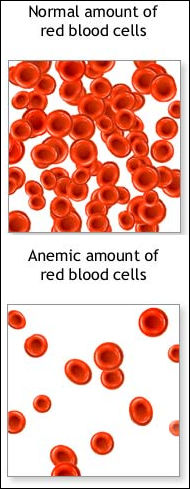
| Higher
Ribavirin Dose with Pre-emptive EPO for Anemia Does Not Improve Treatment Response
in HIV-HCV Coinfected Patients
As reported this week in a poster at the 48th International Conference on Antimicrobial Agents and Chemotherapy (ICAAC 2008) in Washington, DC, Vincent Soriano from Hospital Carlos III in Madrid, Spain, and colleagues explored whether pre-emptive administration of erythropoietin (EPO; Procrit, Epogen) -- a hormone that stimulates red blood cell production -- might enable higher doses of ribavirin in HIV-HCV coinfected patients. Previous studies have shown that higher ribavirin dosing translates into greater ribavirin exposure in the body and a better chance of sustained HCV clearance the researchers noted as background. Further, the best predictor of sustained virological response (SVR) to anti-HCV therapy is the achievement of rapid virological response (RVR), or undetectable HCV RNA at week 4 of treatment. The PERICO study included 175 HIV positive previously untreated chronic hepatitis C patients. The 2 arms had similar characteristics at study entry. Most (73%) were men, the mean age was 45 years, 95% were taking HAART, 90% had undetectable HIV RNA (< 50 copies/mL), and the mean baseline CD4 count was 551 cells/mm3. Most (875) had hard-to-treat HCV genotypes 1 or 4, 81% had a baseline HCV RNA level > 500,000 UI/mL, and 47% had advanced fibrosis or cirrhosis (Metavir stage F3-F4). Study participants were randomly assigned to receive 180 mcg/week pegylated interferon alfa-2a (Pegasys) plus ribavirin at doses of 1000-1200 mg/day (standard therapy) or 2000 mg/day for 4 weeks. Those receiving the higher ribavirin dose also received 50,000 IU weekly EPO. After week 4 of therapy, all patients received standard ribavirin doses. Serum HCV RNA and hemoglobin levels were analyzed at week 4 as part of a planned interim analysis. Results
"The use of greater ribavirin doses (2 g/day) along with pre-emptive EPO during the first 4 weeks of HCV therapy is safe, but fails to enhance ribavirin plasma exposure and rate of RVR," the investigators concluded. They noted that previous studies using high ribavirin doses without pre-emptive EPO demonstrated improvements in RVR rates, leading them to suggest that "extensive intra-erythrocyte accumulation of ribavirin facilitated by regeneration of red blood cells by EPO could explain our findings." That is, they speculated that ribavirin might be accumulating in the extra red blood cells, and thus unavailable to fight HCV outside these cells. Hosp.
Carlos III, Madrid, Spain; Hosp.Txagorritxu, Vitoria, Spain; Hosp. San Pablo,
Barcelona, Spain. |
The
material posted on HIV and Hepatitis.com about ICAAC 2008 and IDSA 2008 is not
approved by nor is it a part of ICAAC 2008 or IDSA 2008. |
![]()
 Studies
have shown that an adequate dose of ribavirin reduces the risk of relapse in patients
with
Studies
have shown that an adequate dose of ribavirin reduces the risk of relapse in patients
with